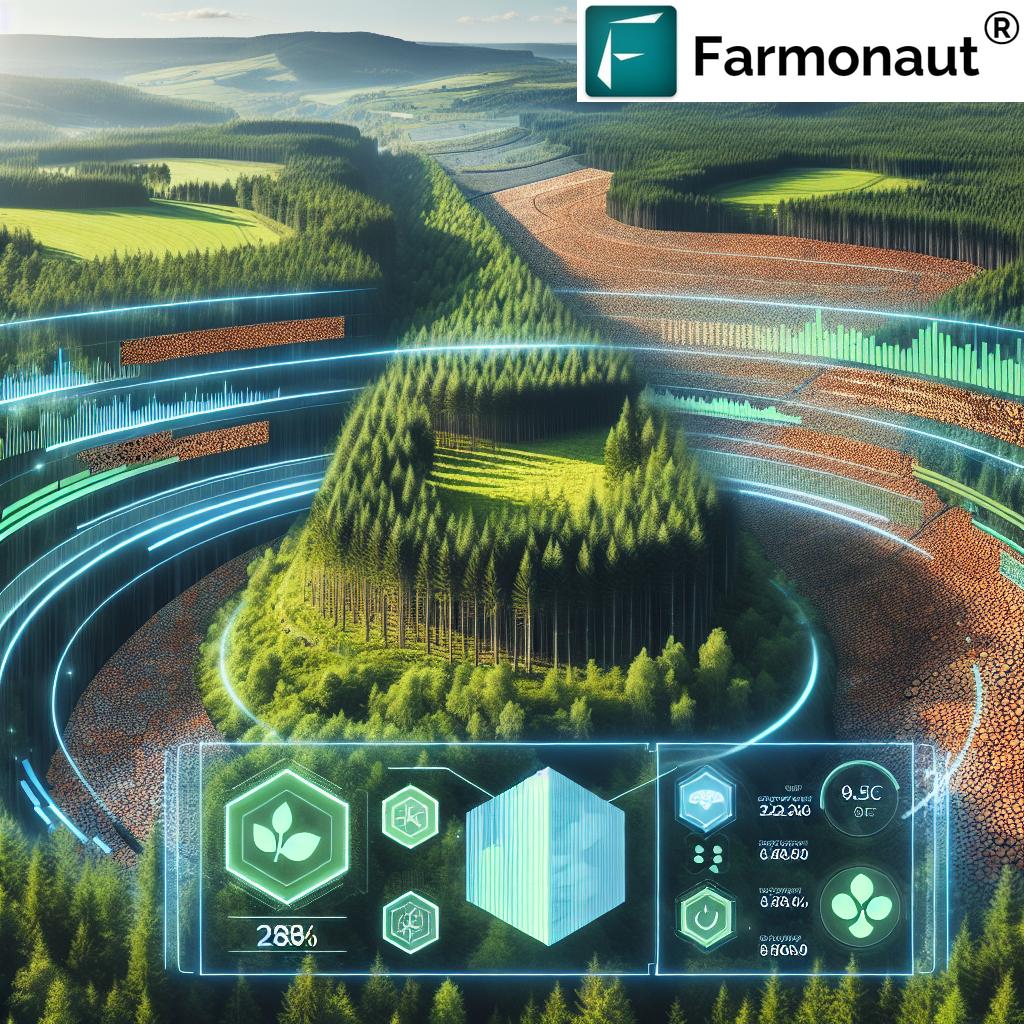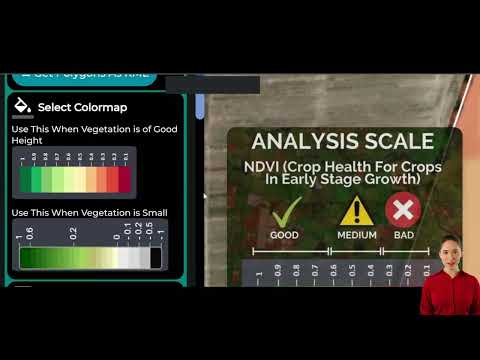Mastering EU Deforestation Regulation: A Guide to Sustainable Forestry Certification and Compliance
“EU deforestation regulations impact over 60% of global forest products trade, affecting millions of hectares worldwide.”
In today’s world, sustainable forestry certification and EU deforestation regulation compliance have become crucial components of responsible forest management worldwide. As we navigate the complex landscape of environmental stewardship, it’s essential to understand the innovative solutions and best practices that are shaping the future of forestry. In this comprehensive guide, we’ll explore the intricacies of sustainable forestry certification, delve into EU deforestation regulation compliance, and examine how cutting-edge technologies are revolutionizing forest management.
Understanding Sustainable Forestry Certification
Sustainable forestry certification is a system designed to ensure that forests are managed responsibly, balancing ecological, economic, and social factors. These certification programs set standards for forest management practices, aiming to protect biodiversity, maintain forest health, and support local communities.
- Forest Stewardship Council (FSC)
- Programme for the Endorsement of Forest Certification (PEFC)
- Sustainable Forestry Initiative (SFI)
Each of these certification systems has its own set of criteria and standards, but they all share the common goal of promoting sustainable forest management practices.
EU Deforestation Regulation: A Game-Changer for Global Forestry
The European Union has taken a significant step towards combating global deforestation with its new regulation on deforestation-free products. This regulation aims to ensure that products sold in the EU market do not contribute to deforestation or forest degradation.
Key aspects of the EU deforestation regulation include:
- Mandatory due diligence for companies
- Traceability requirements for forest products
- Penalties for non-compliance
Compliance with these regulations is now a critical consideration for forestry businesses and stakeholders worldwide.
Innovative Solutions for Forest Management
As we strive to meet the challenges of sustainable forestry and regulatory compliance, innovative technologies are playing an increasingly important role. Let’s explore some of these groundbreaking solutions:
Satellite Technology in Forestry
“Satellite technology can monitor forest health across 100,000+ hectares in a single day, revolutionizing sustainable forestry practices.”
Satellite-based monitoring has transformed the way we manage and protect our forests. This technology allows for real-time tracking of forest cover, detection of illegal logging activities, and assessment of forest health on a massive scale.
At Farmonaut, we’ve harnessed the power of satellite technology to provide cutting-edge solutions for forest management. Our platform offers:
- Real-time forest health monitoring
- Deforestation alerts
- Biomass estimation
Explore our satellite-based solutions:
Blockchain for Supply Chain Tracking
Blockchain technology is revolutionizing supply chain management in the forestry sector. By providing an immutable and transparent record of each step in the supply chain, blockchain ensures the traceability of wood products from forest to consumer.
Benefits of blockchain in forestry include:
- Enhanced transparency
- Improved traceability
- Reduced fraud and illegal logging
Farmonaut’s blockchain-based traceability solutions offer a robust system for tracking forest products throughout the supply chain, ensuring compliance with EU deforestation regulations.
Group Certification for Small Forest Owners
Group certification is an innovative approach that allows small forest owners to achieve certification collectively. This model reduces costs and administrative burdens while enabling smaller operations to access the benefits of certification.
Key advantages of group certification include:
- Cost-sharing among members
- Simplified auditing processes
- Access to broader markets
By participating in group certification, small forest owners can demonstrate their commitment to sustainable practices and comply with EU regulations more effectively.

Best Practices for Sustainable Wood Sourcing
Sustainable wood sourcing is a critical component of responsible forest management. Here are some best practices to ensure your wood sourcing aligns with sustainability goals and regulatory requirements:
- Source from certified forests
- Implement robust chain-of-custody systems
- Conduct regular supplier audits
- Prioritize local and community-based sourcing
By adhering to these practices, businesses can ensure their wood products are sustainably sourced and compliant with EU deforestation regulations.
Farmonaut’s Role in Forest Health Monitoring
At Farmonaut, we’re committed to supporting sustainable forestry practices through our advanced satellite-based monitoring platform. Our technology enables:
- Early detection of forest disturbances
- Accurate assessment of forest carbon stocks
- Monitoring of reforestation efforts
Learn more about our forest monitoring capabilities:
Ecosystem Protection Strategies
Protecting forest ecosystems is a fundamental aspect of sustainable forestry. Here are some key strategies for ecosystem protection:
- Establishing protected areas within forest landscapes
- Implementing wildlife corridors
- Promoting native species regeneration
- Controlling invasive species
These strategies help maintain biodiversity and ensure the long-term health of forest ecosystems.
Tools and Research for Maintaining Forest Integrity
Cutting-edge tools and ongoing research play a crucial role in maintaining forest integrity. Some notable advancements include:
- LiDAR technology for 3D forest mapping
- AI-powered species identification
- Advanced soil analysis techniques
These tools provide valuable data for informed decision-making in forest management.
Transparency in Forestry Processes
Transparency is key to building trust and ensuring compliance in the forestry sector. Here are some ways to enhance transparency:
- Public reporting of management practices
- Open-access data platforms
- Stakeholder engagement programs
By embracing transparency, forestry organizations can demonstrate their commitment to sustainability and compliance.
Data-Driven Decision Making in Forestry
Data-driven decision making is transforming the forestry sector. By leveraging big data and analytics, forest managers can:
- Optimize harvesting schedules
- Predict and mitigate forest health risks
- Improve resource allocation
Farmonaut’s platform provides the data and insights needed for informed decision-making in forest management.
Explore our API for custom data integration:

Impact of Sustainable Practices on Local Communities
Sustainable forestry practices have a significant impact on local communities. Some key benefits include:
- Job creation in rural areas
- Preservation of traditional forest-based livelihoods
- Improved ecosystem services for local populations
By prioritizing community engagement, forestry organizations can ensure that their practices benefit both the environment and local populations.
Navigating the Challenges of EU Regulations
Complying with EU deforestation regulations presents several challenges for forestry businesses. Here are some strategies to navigate these challenges:
- Invest in robust traceability systems
- Conduct thorough risk assessments
- Collaborate with certification bodies and industry associations
- Stay informed about regulatory updates
By proactively addressing these challenges, businesses can ensure compliance and maintain access to the EU market.
The Future of Sustainable Forestry
As we look to the future, several trends are shaping the landscape of sustainable forestry:
- Increased integration of AI and machine learning
- Growing emphasis on carbon sequestration
- Development of innovative wood products
- Expansion of urban forestry initiatives
These trends highlight the dynamic nature of the forestry sector and the ongoing need for innovation in sustainable practices.
Comparison of Sustainable Forestry Certification Programs
| Certification Program | Geographic Coverage | Key Requirements | Compliance with EU Regulations (%) | Technology Integration | Group Certification Options | Cost Estimate for Small Forest Owners | Community Impact Score (1-10) |
|---|---|---|---|---|---|---|---|
| Forest Stewardship Council (FSC) | Global | Strict environmental and social standards | 95% | Satellite Monitoring, Blockchain | Yes | $5,000 – $10,000 | 9 |
| Programme for the Endorsement of Forest Certification (PEFC) | Global | National adaptation of sustainable forest management criteria | 90% | Satellite Monitoring | Yes | $3,000 – $8,000 | 8 |
| Sustainable Forestry Initiative (SFI) | North America | Focus on sustainable forestry practices and responsible procurement | 85% | GIS Mapping | Limited | $4,000 – $9,000 | 7 |
| EU Timber Regulation (EUTR) Compliance | European Union | Due diligence system to prevent illegal timber trade | 100% | Traceability Systems | N/A | Varies | 6 |
Explore our iOS app for on-the-go forest monitoring:
Farmonaut’s Contribution to Sustainable Forestry
At Farmonaut, we’re committed to supporting sustainable forestry practices through our advanced technology solutions. Our platform offers:
- Real-time satellite monitoring of forest health
- AI-powered analytics for early detection of forest disturbances
- Blockchain-based traceability for forest products
- Carbon footprint tracking for forestry operations
By leveraging these tools, forestry stakeholders can enhance their sustainable management practices and ensure compliance with EU deforestation regulations.
Conclusion: Embracing a Sustainable Future for Forests
As we navigate the complex landscape of sustainable forestry certification and EU deforestation regulation compliance, it’s clear that technology, collaboration, and innovation will play crucial roles. By embracing best practices, leveraging advanced tools like those offered by Farmonaut, and prioritizing transparency and community engagement, we can ensure a sustainable future for our forests.
The journey towards fully sustainable and compliant forestry practices is ongoing, but with the right tools and commitment, we can make significant strides in protecting our valuable forest resources for generations to come.
FAQ Section
Q: What is sustainable forestry certification?
A: Sustainable forestry certification is a system that verifies forests are managed according to strict environmental, social, and economic standards. It ensures responsible forest management practices that balance ecological preservation with economic viability.
Q: How does the EU deforestation regulation impact global forestry?
A: The EU deforestation regulation requires companies to ensure their products sold in the EU market don’t contribute to deforestation. This impacts global supply chains, necessitating enhanced traceability and due diligence in forest product sourcing worldwide.
Q: What role does satellite technology play in sustainable forestry?
A: Satellite technology enables real-time monitoring of forest health, detection of illegal logging, and assessment of forest cover changes. It provides crucial data for informed decision-making in forest management and compliance with regulations.
Q: How can small forest owners benefit from group certification?
A: Group certification allows small forest owners to collectively achieve certification, sharing costs and administrative burdens. This makes sustainable forestry practices more accessible and economically viable for smaller operations.
Q: What are the key challenges in complying with EU deforestation regulations?
A: Key challenges include implementing robust traceability systems, conducting comprehensive risk assessments, and staying updated with evolving regulatory requirements. Adapting existing practices to meet new standards can also be resource-intensive.
Explore our developer documentation for custom integrations:
API Developer Docs






